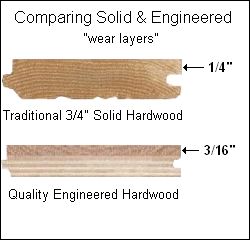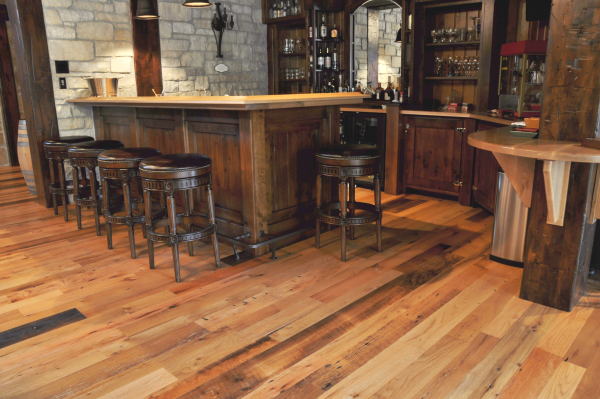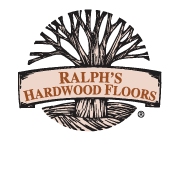When selecting a wood floor, engineered floors may be a great option. Before you can make that determination, though, it's important to define what “engineered floor" actually means and to make sure you aren't under any misconceptions.
"Engineered" refers to the floor's structure.
When we refer to the structure of a floor, we are talking about its layers. For engineered floors, this includes a hardwood layer that is adhered to a multi-layer plywood. Floors that are factory-finished are referred to as “prefinished engineered floors.” This is important because engineered floors are available in both prefinished and finished-on-site varieties.
A good-quality engineered floor is designed to look and feel exactly like solid hardwood flooring. However, because of its structure, it's designed to expand and contract less, making it a great choice in an unstable environment.

Hardwood Floor Misconceptions
When it comes to engineered hardwood versus solid-plank hardwood, we hear a lot of misconceptions:
-
Hardwood cannot be installed below grade. You can certainly install below grade as long as you use engineered hardwood. For example, check out this amazing floor.

Reclaimed Engineered Floor
-
You can't install hardwood over in-floor heat. You absolutely can as long as it is engineered.
-
Engineered wood floors are “fake” and “cheap” compared to solid wood floors. For some of the very inexpensive engineered floors, this might be true. But a quality engineered floor will look and feel exactly like a high-quality solid hardwood floor.
-
Engineered wood won't cup or gap. The plywood layers of engineered flooring help keep the floor from moving too much, thus minimizing cupping and gapping.That being said, there is no way to completely prevent hardwood from expanding and contracting as temperature and humidity change, and this fluctuation can cause any hardwood flooring to cup from too much moisture or gap from excessive dryness.
-
Wood floors can't be installed in existing homes because it is too thick. Engineered wood is usually thinner than solid flooring, so it can be installed in areas where a thicker solid wood simply will not work.
-
Engineered floors always have that "hollow" sound. By gluing or nailing it down, depending on the surface it is installed over, you can avoid that "hollow" sound.
-
Engineered floors can't be sanded and refinished. Quality engineered floors are designed to last a very long time and include a generous wear layer. If you ever need to refinish, it is possible.
-
Solid hardwood is more expensive than engineered flooring. Despite the fact that solid wood has more actual wood in it, it's typically less expensive than quality engineered flooring. This is because the manufacturing process involved in producing good-quality engineered flooring is more labor-intensive.
When it comes to engineered hardwood, it really isn't a case of preferences but rather function and location. To make a fully informed choice about whether to select solid or engineered hardwood flooring, review the pros and cons of each option and then contact a knowledgeable professional to assist you in making your decision.
Ralph's is proud to provide both solid and engineered hardwood floor options for our customers.
















